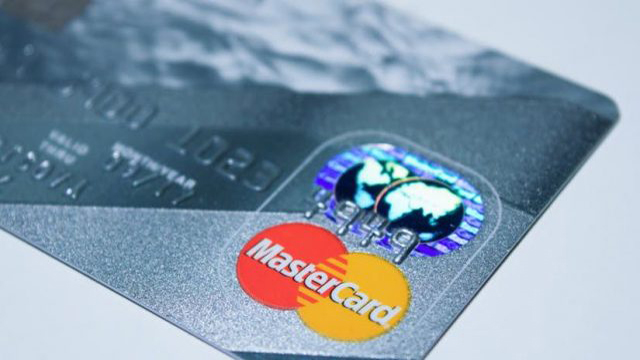Advertiser Disclosure
How to Save Money
Updated On September 5, 2023
Editorial Note: This content is based solely on the author's opinions and is not provided, approved, endorsed or reviewed by any financial institution or partner.

If you're wondering how to save money, then this complete guide will teach you simple strategies to increase your bank account. The best strategy is to start thinking about saving each day, month and for the long-term.
Top Picks For Student Loan Refinancing
April 2024
View Details
Overview
Details
View Details
Overview
Details
View Details
Overview
Details
View Details
Overview
Details
View Details
Overview
Details
View Details
Overview
Details
View Details
Overview
Details
View Details
Overview
Details
Disclosures: SoFi | Earnest | NaviRefi | ELFI | Splash Financial | Citizens | Laurel Road | LendKey
What is the best way to save money each day?
When it comes to saving money, the first place to start is to look at your daily spending.
Your daily spending includes everything from eating out and entertainment to transportation and groceries.
Here are 5 easy ways to save money each day:
1. Keep your pocket change
If you spend money with cash, your pocket change can add up. If you want to know how to save money fast, keep that extra change each day in a safe place. Deposit it in your bank account. Banks such as TD Bank have free change counters, and make it easy to deposit your loose change in your bank account.
2. Don’t automate online purchases
It’s convenient to shop online. With a click of a button, you’ve ordered a new wardrobe. The best way to save with online purchases is not to store your credit card and billing information with the online retailer. Is it inconvenient? Yes. Will it save you money? Yes, because it is a natural deterrent when you have to enter your payment and contact information each time.
3. Save money with an automated savings plan
One of the best ways to save money is to automate savings. When you automate savings, you use an online tool or app to move money from your checking account to savings account automatically. Apps such as Digit or Qapital are two examples of apps that automate savings, and transfer funds from your checking account to savings account to save. Acorns transfers funds with your remaining change each time you make a transactions.
4. Limit how many times you eat out
Everyone loves to dine at a restaurant, but the costs can add up. Another great way how to save is to eat out only on weekends. You can also skip an appetizer or those extra cocktails. If you want to save money fast, then consider ordering a salad or even an appetizer as your main dish. You can also save your money (and calories) if you skip dessert.
5. Avoid impulse buying
Are you someone who buys on impulse? Stop. Think through your big ticket purchases. Wait for holiday sales before you make major purchases. When you buy items on impulse, you may regret the purchase later. So, think before your spend.
What is the best way to save money each month?
When it comes to how to save money each month, you should focus on recurring payments. These are the payments that show up every month such as housing, cable, student loans, credit cards and more.
Here are 5 easy ways to save money on a monthly basis:
1. Change your cell phone plan
One of the best way to save money each month is to evaluate your cell phone plan. Do you need all those minutes? Do you need all that data? Perhaps a family plan makes sense. With taxes and fees, cell phone plans can add up. Shop around with different carriers to find the cell phone plan that makes sense for you.
2. Change your cable plan
To save on travel, always check the hotel website for discounts, deals and promotions. The good news is that you can often find discounts for multi-night stays or if you travel during the off-peak season. Sometimes, hotels will honor the discount even if you book on a third party website. However, you should contact the hotel first to ensure you can get the promotion even if you book through a third party.
3. Save on your electric bill
How to save money with your electric bill is a popular question with an easy answer. In the summer, a fan can save money compared to an air conditioner. Also, if you keep the drapes closed during the day, it can keep your home cool and save on air conditioning costs. In the winter, the best way to save money is to ensure you have energy efficient doors, windows and appliances.
4. Consolidate credit card debt
The best way to save money on credit card debt is to pay off your credit card bill each month. With credit card debt, the interest is the most expensive part and can add fast. If you have existing credit card debt, the best way to save money is to consolidate credit card debt with a credit card consolidation loan. When you consolidate credit card debt, you combine all your existing credit card debt into a new, single credit card consolidation loan with a lower interest rate. The lower interest rate helps you save money and pay off your credit card debt faster. Here are our best credit card consolidation loans.
5. Refinance student loans
The best way to save money with your student loans is to refinance student loans. Student loan refinance can help you save up to $20,000+ over the life of your student loans. With student loan refinance, you combine your existing federal and private student loans into a new, single student loan with a lower interest rate. You can choose between a fixed and variable interest rate, and a loan term between 5 and 20 years. You can learn more about our Best Student Loan Refinance Rates.
How to save money for the long-term?
When it comes to how to save money for the long-term, think about the financial mentality you need to make a mind shifting in spending and saving.
Here are 5 easy ways to save money on a long-term basis:
1. Develop a spendthrift mindset
If you want to know how to save money, you need to develop the right financial mindset. That starts with how you approach money, spending and saving. Do you bargain shop? Do you comparison shop? Do you only buy everything new? Do you buy discounted items? Your mentality drives your spending and saving habits. When you focus more on the bottom line, you will be on your way to save money for the long-term.
2. Create an action plan
Whether it is a budget or a long-term action plan, think about the areas where you can save money. Some ways to save may include where you live, the size of your house, what kind of car you drive, whether your car is new or used, where you vacation and many others. Think about your choices, preferences and actions. Identify a budget and action plan how you are going to manage these preferences and choices with the amount of money you have. Refine estimates with real-life costs, and modify your action plan over time to fit your lifestyle and realistic budget.
3. Create a savings plan
You need a mechanism of forced savings. A high yield savings account is a great place to start. You can also choose one of the Best IRAs or Best Roth IRAs to ensure you have a stable retirement account. Choose investment options that will help you retirement grow and match your retirement goals.
4. Set goals
Setting goals can actually teach you how to save money. Why? When we set goals, we create discipline and have a concrete thing to work towards. Whether it is a vacation or new home, we can quantify the cost and create a time line by when we need to save. The second component is how to save money. By making daily and monthly modifications in your financial life, you can save the money you need to reach your financial goal.
5. Analyze your spending
The best way to save is to analyze your actual spending. This is essential to track your monthly cash flow, and to determine whether your actual savings and spending matches your savings plan.
When you reflect on your spending, you can evaluate your process determine where to make adjustments. Most importantly, ensure that your financial plan going forward focuses on both spending less and saving more.










